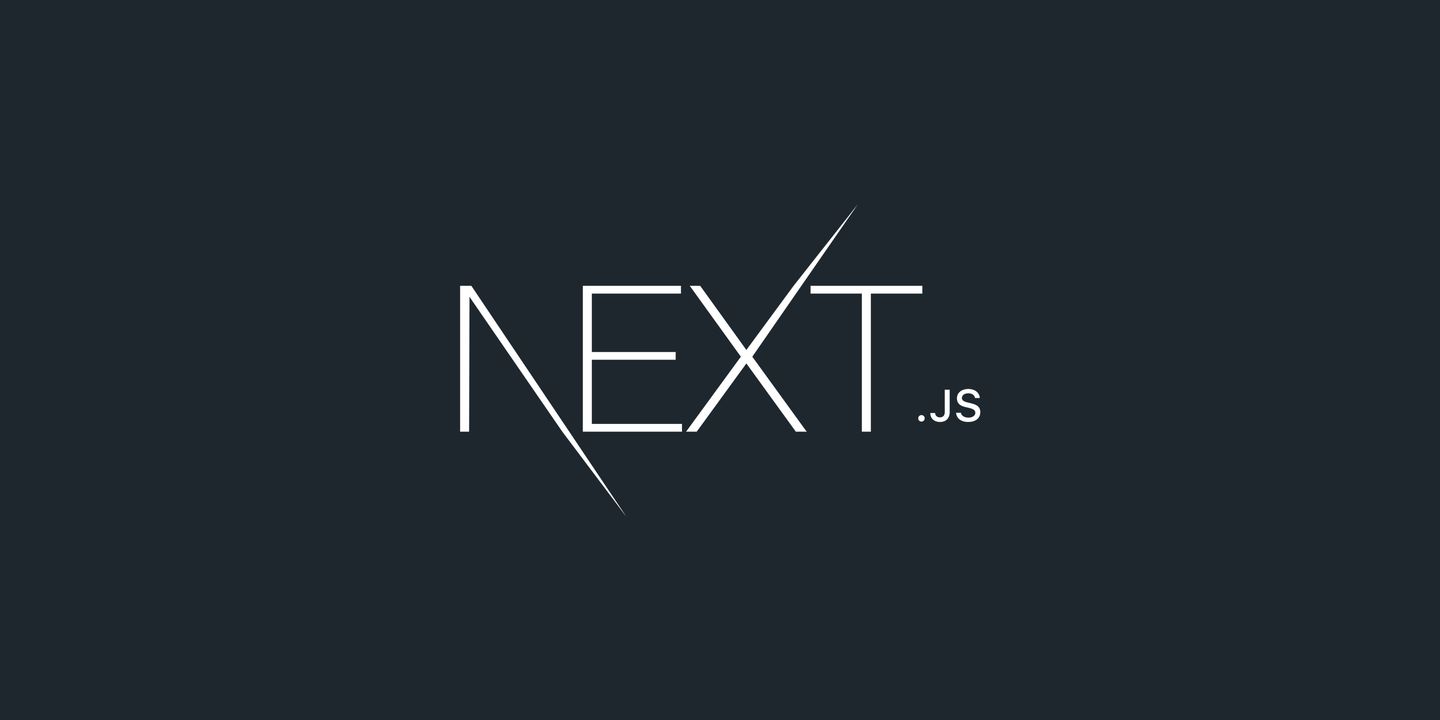Web development has come a long way since the early days of static HTML pages. Nowadays, websites are expected to be interactive, dynamic, and highly performant. To meet these demands, developers often turn to modern JavaScript frameworks like React, which has gained immense popularity due to its component-based architecture and efficient rendering. One such framework that has revolutionized React development is Next.js.
In this article, we will explore Next.js, its features, and how it empowers web development with React.
What is Next.js?
Next.js is a popular open-source framework for building web applications with React. It was created by ZEIT, now Vercel, and has gained significant traction in the developer community due to its simplicity, performance, and powerful features. Next.js takes the best of React and extends it with server-side rendering (SSR), static site generation (SSG), automatic code splitting, and other optimizations, making it an excellent choice for building modern web applications.

Use Cases of Next.js
Next.js is a versatile framework that allows developers to build a wide range of web applications and websites. Here are some examples of what you can build with Next.js:
Single-Page Applications (SPAs): Next.js can be used to build SPAs with dynamic content and interactive user interfaces. Its server-side rendering capabilities ensure that initial page loads are fast, while client-side navigation provides a smooth and responsive user experience.
E-commerce Websites: Next.js is well-suited for building e-commerce websites that require fast rendering, SEO optimization, and server-side rendering for product listings and search results. It provides a solid foundation for creating dynamic shopping experiences.
>> Read more about eCommerce:
- Top 15 Ecommerce Web Development Companies
- Top 5 Vietnam Ecommerce App Development Company 2023
- Why E-Commerce Businesses Necessitate A Mobile App?
Blogs and Content Websites: Next.js’s support for static site generation makes it an excellent choice for building blogs and content-driven websites. With pre-rendered pages, these types of websites can achieve excellent performance, while still allowing for dynamic content generation.
Landing Pages and Marketing Websites: Next.js enables developers to quickly create high-performance landing pages and marketing websites. Its automatic code splitting feature ensures that only necessary code is downloaded, resulting in faster loading times and better user experience.
Dashboards and Data Visualizations: Next.js can be used to build data-heavy applications, such as dashboards and data visualizations. Its flexibility and integration with libraries like D3.js and React-based charting libraries make it suitable for creating interactive and real-time data-driven interfaces.
Progressive Web Apps (PWAs): Next.js supports building Progressive Web Apps, which are web applications that provide an app-like experience with offline functionality, push notifications, and device hardware access. With Next.js, developers can create PWAs with server-side rendering and optimized performance.
SaaS Applications: Next.js can be utilized to build software-as-a-service (SaaS) applications, where multiple users access the application over the web. Its server-side rendering and API routes make it easy to create dynamic features, authentication systems, and handle user interactions.
Documentation Websites: Next.js’s simplicity and support for static site generation make it an excellent choice for building documentation websites. Developers can easily generate and maintain documentation pages, and users benefit from fast loading times and easy navigation.
Portfolio Websites: Next.js can be used to create impressive portfolio websites for showcasing projects and skills. Its performance optimizations and support for CSS-in-JS libraries make it a great choice for creating visually appealing and interactive portfolios.
These examples demonstrate the versatility of Next.js as a framework for building various types of web applications. Whether it’s a dynamic web app, content-driven website, e-commerce platform, or data visualization tool, Next.js provides the necessary tools and optimizations to deliver high-quality and performant web experiences.
Key Features of Next.js
Server-side Rendering (SSR)
One of the standout features of Next.js is its built-in support for server-side rendering. SSR enables rendering React components on the server before sending them to the client, resulting in faster initial page loads and improved search engine optimization (SEO). Next.js makes SSR effortless by providing a simple API and automatic code splitting, allowing developers to decide which parts of their application should be rendered on the server.
Static Site Generation (SSG)
In addition to SSR, Next.js also supports static site generation. With SSG, you can pre-render pages at build time and serve them as static HTML files. This approach is beneficial for content-driven websites, blogs, and landing pages that don’t require real-time data. SSG improves performance by reducing server load and ensuring faster delivery of static content to users.
Automatic Code Splitting
Next.js automatically splits your JavaScript code into smaller chunks based on the pages and components you use. This code splitting feature improves the initial loading time of your application by delivering only the necessary code to the client, avoiding unnecessary downloads. It also allows for better caching and enables efficient client-side routing.
API Routes
Next.js simplifies the creation of API endpoints by introducing API routes. With API routes, you can define serverless functions that handle HTTP requests and responses. This built-in API functionality eliminates the need for setting up a separate server and provides an easy way to create server-side logic within your Next.js application.
CSS-in-JS and CSS Modules
Styling is an essential aspect of web development, and Next.js offers flexible options for managing CSS. It supports popular CSS-in-JS libraries like styled-components and CSS Modules, allowing developers to write scoped CSS directly in their components. This approach promotes modularity and prevents CSS class name collisions.
Zero Configuration
Next.js embraces the concept of zero configuration. Out of the box, Next.js provides sensible defaults for most use cases, reducing the need for manual setup. It handles webpack configuration, routing, and other complex aspects, allowing developers to focus on building their application logic rather than spending time on boilerplate code.
Extensibility and Ecosystem
Next.js is highly extensible and integrates seamlessly with the React ecosystem. It supports the latest features of React, including hooks and context API. Additionally, Next.js has a thriving ecosystem of plugins and community-contributed packages that further enhance its capabilities. Whether you need internationalization, authentication, or performance optimization, there’s likely a Next.js package available to fulfill your requirements.
Pros and Cons of Using Next.js
Pros of Using Next.js
Not only do programmers adore Next.JS, but entrepreneurs and marketers do as well. These three communities are interested in NextJS for various reasons because they are pursuing distinct objectives. We need to dissect them!
For Corporate Venture Building Projects
As companies pursue technological advancements and sustainable growth, corporate venture building projects are rising. The strong React framework Next.js has many benefits for this type of project:
-
Accelerating MVP Development: New corporate venture development begins with a solid MVP. Next.js supports quick development cycles for iterating, validating, and refining concepts. You can access the market and validate company ideas faster.
>> Read more: 8 Leading Software Development Life Cycle Procedures
-
Superior User Experience: In the competitive digital world, offering outstanding user experiences is essential. Dynamic routing, client-side rendering, and automatic code splitting make Next.js stand apart. These characteristics enable seamless transitions, faster page loading, and improved interactivity, creating compelling user interfaces. So you can design captivating digital experiences that set your business apart.
-
SEO Excellence: Corporate venture building requires a strong internet presence. Next.js supports server-side rendering, allowing search engines to crawl and index pages. SEO-friendliness lets you maximize product visibility from the start, boosting organic traffic and brand awareness.
-
Modular Architecture and Reusability: Building new businesses demands efficient collaboration and code reuse to reduce expenses. Next.js' modular architecture lets developers construct apps with reusable parts. This method simplifies development, improves code maintainability, and encourages teamwork on many project goals.
-
Thriving Developer Ecosystem: A thriving developer community and rich plugin and library ecosystem benefit Next.js. This ecosystem lets designers use pre-built components, integrations, and tools to speed up development and improve their creations. This lets venture teams quickly prototype and implement new features.
-
Future Growth Scalability: Scalability becomes important as corporate venture building projects grow. Next.js scales to meet rising user bases and commercial needs. Next.js will help your project grow and disrupt the market, so you may build with confidence.
For Business Owners
Every company wants a higher conversion rate, which boosts sales. These organizations must leverage new technologies to create a distinctive user experience for current and potential clients.
Next.JS gives them complete control over the design of their websites, online marketplaces, apps, and other digital products. Additionally, you are not bound by eCommerce platform or CMS-specific themes or plugins.
Additional NextJS benefits for businesses include:
-
Adaptability and Responsiveness: Both are essential to a good user experience and ensure that websites and apps adapt to screen sizes.
-
Data Security: Static NextJS web pages have no direct link to the database, dependencies, user data, or any sensitive data. This protects data.
-
Faster Time To Market:. Many preset components make NextJS a rapid MVP creator. This construction method lets you gather feedback rapidly and enhance your product without losing time or money.
-
Fully Omnichannel: Any device may access NextJS websites and apps, so you can offer your products and services through several channels.
-
Quick Page Load: Visitors and clients will be satisfied with NextJS websites and web apps since static websites are fast.
-
On-Demand Help: As NextJS and its development services gain popularity, so do developers. Because of that, finding an agency or freelancer to make improvements will be easy.
>> You may be interested in:
- How to Choose the Best Web Development Company?
- Top 7 Best React Component Libraries for Your Projects
For Next.js Developers
Features make Next.js useful for web developers. Reusable React components save time and money, which excites developers.
Beginning with the latest Next.js release! Next.js App router – this new app-building paradigm was introduced in early May 2023 after beta testing. It enhances developer experience, rendering performance, and mental model. This update added perks like:
-
Sending App Elements to Users: React Server Components enable fast streaming of app parts, allowing consumers to engage without waiting for full load.
-
Rapid Render of the Application: By using static rendering.
-
More Efficient Development: because of server-centered routing.
-
Improved Initial Load Times, JavaScript Bundle Sizes, and SEO: Server components let you define server-side rendering components that update the client.
-
CSS parser. Coders can import CSS from JavaScript. New pares enhanced CSS handling and revealed bugs.
-
Fast Refresh: In seconds, React component updates are visible.
-
Automatic Image Optimization and Built-in Image Component: This feature optimises photos automatically. Supporting AVIF images makes them 20% smaller than WebP.
-
Community Support: NextJS is gaining popularity and contributions. Because of that, developers might uncover likely existing solutions instead of starting from scratch.
-
Combining Server-Side Rendering SSR and Static Site Generation SSG: Prerender pages at build or request time in one project.
-
Gradual Static Regeneration. Web developers can re-render pages in the background as traffic comes in. This makes static stuff dynamic.
-
TypeScript Support: automated TypeScript setup and compilation.
-
No Configuration: NextJS bundles and compiles automatically. Thus, it is production-optimized from the start.
-
Data Fetching: Content rendering varies by app use case. We use server-side rendering or static site generation to pre-render and incremental static regeneration to update or create content in runtime.
-
Split code: Splitting the code and serving components only when needed reduces your app's first payload.
-
Rust-based compiler SWC: Minify and transform JavaScript for production. Next.js now features a new Rust compiler that optimizes bundling and building, resulting in 3x quicker local refreshes and 5x faster production builds.
-
Middleware: Allows code over configuration, so you can run code before a request. You can reroute users and alter request responses.
Cons of Using Next.js
The number of Next benefits is huge and clearly outweighs its cons. However, let’s write them down to be as objective as it’s possible.
Development and management: The flexibility, given by Next, has its cost – continuous management. To make all desired changes properly, you will need a dedicated person with proper knowledge. The good news is that this person doesn’t have to be a developer.
Ongoing cost: since Next.js does not provide many built-in front pages, you have to create your own front-end, which will require changes from time to time. It means that you will have to pay a frontend developer to get the job done.
Lack of built-in state manager: If you need a state manager in your app, you have to add Redux, MobX or something else.
Low on plug-ins: You cannot use much of easy-to-adapt plugins.
Learning Curve: While Next.js simplifies many aspects of web development, there is still a learning curve, especially for beginners. Developers need to understand React and its concepts before diving into Next.js. Additionally, familiarity with server-side rendering and static site generation can be beneficial.
Limited Flexibility: Next.js follows a specific project structure and conventions. While this helps in reducing configuration and boilerplate code, it may limit flexibility for developers who prefer more control over their project setup.
Performance Overhead: Although Next.js provides performance optimizations, such as code splitting and server-side rendering, improper usage or inefficient coding practices can still impact performance. Developers need to be mindful of best practices and optimizations to ensure optimal performance.
Server Deployment: Deploying Next.js applications may require specific server configurations or platforms compatible with server-side rendering. While Next.js offers deployment options through Vercel (formerly ZEIT Now) and other platforms, additional considerations and setup may be necessary for custom deployment environments.
Additional Complexity for Small Projects: For smaller projects with simple requirements, Next.js may introduce additional complexity. The benefits of server-side rendering and static site generation may not be fully utilized, leading to unnecessary complexity for such projects.
>>> Relia Software Next.js Development Service with a dedicated developer team <<<
Click here: Next.js Development Company
Next.js Architecture
-
Pages: Each file in the “pages” directory represents an application route in Next.js. This simplifies route building and provides automated code separation.
-
Server-Side Renderings (SSR): Next.js pre-renders pages on the server using React's server-side rendering to give initial content to the client.
-
Fetching Data: Next.js offers getStaticProps, getServerSideProps, and getStaticPaths to get data at build time, runtime, or for dynamic paths.
-
Dynamic Routing: Next.Use brackets ([ ]) in the file name to create dynamic segments in the URL to generate dynamic routes.
Best Practices of Next.js Web Development
-
File Organization: Separate components, pages, styles, and utilities into their own folders in Next.js's modular structure.
-
Code Splitting: To ensure that JavaScript bundles are optimized for fast load times, use Next.js's automatic code splitting.
-
Lazy Loading: Make use of React's lazy loading features to dynamically load components as they are needed.
-
Server-Side Data Fetching: Consider the data type and performance constraints to select the most suitable data retrieval technique (getStaticProps, getServerSideProps, or getStaticPaths).
-
Optimizing SEO: If you want to make it easier for search engines to index your app, use Next.js's built-in features like server-side rendering and static site generation.
-
Caching And CDN: Improve performance by caching static assets and optimizing content delivery with the use of caching methods and Content Delivery Networks (CDNs).
Next.js Tooling and Ecosystem
-
Next.js Plugins And Extensions: The Next.js plugin and extension ecosystem is vibrant. Check out next-auth for authentication, next-i18next for internationalization, and other popular plugins.
-
TypeScript Support: Developers can construct type-safe applications with Next.js' great TypeScript support and benefit from TypeScript's productivity and runtime error reduction.
>> Read more about TypeScript: A Complete TypeScript Decorators Tutorial With Real
-
Deployment Options: Serverless environments like Vercel (previously Zeit Now), traditional servers, and containerized solutions like Docker can host Next.js apps.
-
DevTools And Debugging: Next.js works smoothly with React DevTools and VSCode for powerful debugging and development.
Examples of Next.js Website
Here are just three of the great examples of websites build in Next.js. You can also check out Next.js's official showcase for even more inspiration.
Tiktok
TikTok is a highly popular social media platform for uploading short-form mobile videos with millions of daily users.

Hulu
Like Netflix and HBO GO, Hulu lets customers watch movies and TV shows online.

Deliveroo
You can use the Deliveroo app to place orders from local restaurants and takeout and have them brought straight to your door.

Deliveroo helps order restaurant and takeout food. (Source: Internet)
Marvel
Marvel.com is the official Next JS website for Marvel movies, characters, comics, and TV.

>> You may consider:
- Next.js vs Angular: What Are The Differences?
- How To Hire Dedicated ReactJS Developers?
- Cost to Hire the Best React Developer in 2023
Conclusion
Next.js has become a game-changer in the world of React development, providing developers with powerful tools and optimizations to create fast, scalable, and SEO-friendly web applications.
With built-in support for server-side rendering, static site generation, automatic code splitting, and other features, Next.js simplifies complex tasks and enables developers to focus on building delightful user experiences. Whether you’re a seasoned React developer or just getting started, Next.js is undoubtedly a framework worth exploring for your next web project.
Contact us today to learn how we can help make your Next.js project development a success.
>>> Follow and Contact Relia Software for more information!
- Web application Development
- Mobile App Development
- Designing an application
- development
- coding

